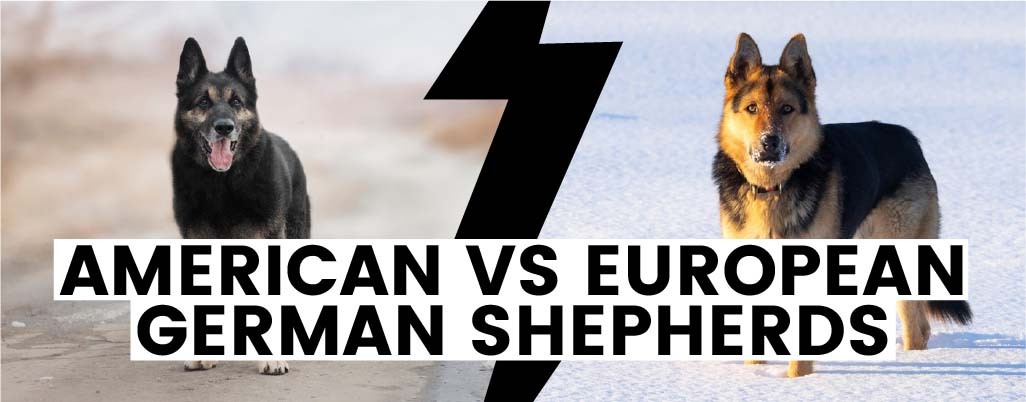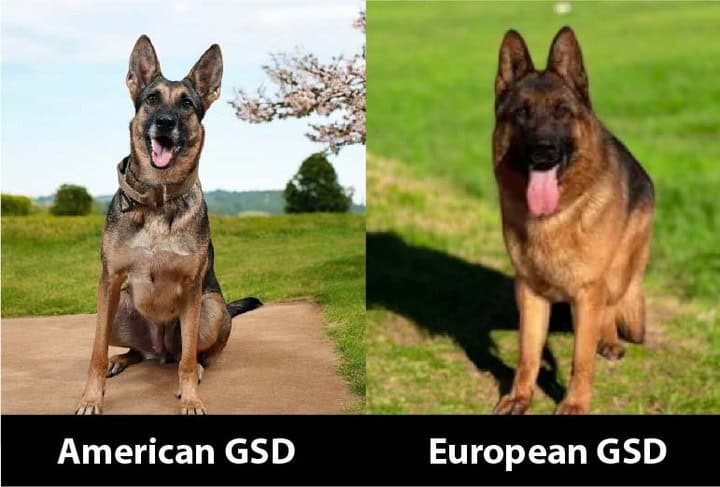
Understanding the differences between European bloodline German Shepherds and those bred in America is crucial for anyone considering this breed, whether for companionship, protection, or competition. These distinctions impact everything from the dog’s temperament and physical build to its suitability for various roles and health tendencies.
At KEMPKES EXECUTIVE, we specialize in European German Shepherds, leveraging over 30 years of breeding and training expertise to deliver dogs that meet the highest standards of excellence. This expertise ensures that each of our German Shepherds is not only a top-tier example of the breed but also a perfect fit for the specific needs of their future owners.
As you learn more about these incredible dogs, you’ll understand how important it is to pick the right bloodline for your family and lifestyle. This choice can really make a difference in finding a dog that fits perfectly into your home.
SUMMARY!
- European German Shepherds are bred for robustness and work efficiency, while American German Shepherds emphasize aesthetic qualities for show.
- Europeans are preferred for active roles like protection due to their resilience, whereas Americans excel in companionship and domestic environments.
- European Shepherds often have fewer genetic health issues due to rigorous breeding standards focused on functionality.
- Choosing between the bloodlines depends on the dog’s intended role, family lifestyle, and health needs, emphasizing the importance of a knowledgeable breeder.
At a Glance
| Feature | European German Shepherds | American German Shepherds |
|---|---|---|
| Physical Appearance | Taller, leaner, with a more angular structure. | Stockier, with a pronounced sloped back and a broader head. |
| Height | Typically 24-26 inches (61-66 cm) for males,
22-24 inches (56-61 cm) for females |
Generally 22-26 inches (56-66 cm) for males, 20-24 inches (51-61 cm) for females |
| Weight | Males usually weigh 75-95 pounds (34-43 kg);
Females 50-70 pounds (23-32 kg) |
Males typically weigh 65-90 pounds (29-41 kg);
Females 50-70 pounds (23-32 kg) |
| Grooming Needs | Generally lower, Brushing 1-2 times a week; more during shedding seasons | Requires regular grooming Brushing 2-3 times a week; more frequent for show dogs |
| Lifespan | Similar lifespan (10-14 years), often healthier overall | Similar lifespan but may face more health challenges due to breeding practices |
| Exercise | Requires at least 1-2 hours of exercise daily, including walks, runs, and mental challenges | Needs 1 hour of exercise daily, including walks, playtime, and mental stimulation |
American German Shepherds vs European German Shepherds

Historical Background
As German Shepherds made their way to America, the breed’s focus gradually shifted. In Europe, the emphasis remained on enhancing their abilities as working dogs, aligning with von Stephanitz’s original vision. This led to rigorous training and breeding standards that prioritized traits such as intelligence, discipline, and work ethic. European breeders continued to select dogs that excelled in protection work, herding, and other utility roles, maintaining a strong adherence to the breed’s working heritage.
Conversely, in America, as the breed grew in popularity, there was a stronger emphasis on appearance and show qualities.
American breeders often focused on aesthetic attributes, such as a sloping back and unique color patterns, which were highly valued in dog shows. This divergence has led to noticeable differences in structure and temperament between European and American German Shepherds.
While American lines may exhibit more pronounced physical beauty as per show standards, European lines often retain robustness and drive, which is ideal for work and protection roles.
CALL Michael and Jeannette Today!
Your Loyal German Shepherd is Just a Call Away – Purebred and Ready for Your Family!

Genetic Differences
The genetic makeup of European and American German Shepherds reflects their breeding objectives and the distinct roles they are cultivated to fulfill. European German Shepherds are bred with a focus on maintaining the breed’s original working capabilities. This involves selecting traits that enhance their stamina, agility, and temperament for active roles such as protection, police work, and search-and-rescue missions. As a result, European lines generally possess a robust genetic profile that emphasizes strong bone structure, remarkable work ethic, and a high level of trainability.
In contrast, American German Shepherds often exhibit traits that align more with aesthetics and show qualities due to the breeding standards emphasized by American kennel clubs. This selection for physical appearance leads to traits like a more angulated hindquarters, a softer temperament, and, often, a richer coat variety. While these characteristics may increase their appeal in the show ring, they can sometimes result in a compromise on the breed’s working abilities and overall health. For example, the exaggerated rear angulation commonly seen in American lines can lead to issues with hip dysplasia and other joint problems.
The breeding standards set forth in each region deeply influence these genetic differences, which are not just superficial.
European standards, governed by organizations like the FCI (Fédération Cynologique Internationale), heavily emphasize the functionality and performance of German Shepherds. Conversely, American standards often prioritize conformation to breed-specific aesthetic ideals, which may not necessarily align with the breed’s original working purpose.
European and American German Shepherds display distinct physical characteristics that not only differentiate them visually but also affect their performance and health.
Physical Characteristics
European German Shepherds typically exhibit a more uniform body structure that is well-suited for rigorous activities. They have a straighter back with a slight slope from the shoulders to the tail, which supports greater stability and endurance. This structural trait allows for sustained activity and reduces the risk of spinal issues that can impede a working dog’s performance. European Shepherds also tend to have a denser, weather-resistant coat, a broader head, and a more pronounced muzzle, features that are ideal for outdoor and protective work.
American German Shepherds, on the other hand, often show a more dramatic slope in their back, culminating in a lower-set rear. This distinctive feature, while striking in the show ring, can contribute to health problems such as hip dysplasia and other joint-related issues. The American variety also features a more refined head shape and a thinner coat, which, while aesthetically appealing, may not offer the same level of protection from harsh weather conditions. Their overall appearance is often taller and leaner, with an emphasis on grace and elegance rather than the ruggedness required for fieldwork.
These physical differences are a direct result of the breeding goals in each region. American breeders have historically optimized for traits that garner success in dog shows, focusing on beauty and gait, whereas European breeders have sustained the breed’s original purpose as a working dog, emphasizing structural integrity and capability.
As such, the European German Shepherd’s build is generally more conducive to the demanding roles they often serve, such as in law enforcement or search and rescue operations, whereas the American German Shepherd’s structure might make them more vulnerable to certain health issues while excelling in showmanship.
Temperament and Behavior
The temperament and behavioral traits of German Shepherds vary significantly between the European and American bloodlines, reflecting their breeding and training for different roles and environments.
European German Shepherds are renowned for their solid and stable temperament, making them exceptional candidates for protection, police, and military roles. They handle high-stress situations with calm and control, displaying keen alertness and strong protective instincts. Their assertiveness and high trainability make them suitable for serious work where reliability under pressure is crucial. However, these dogs are not just about work; their loyalty and balanced nature also make them excellent family pets, provided they receive enough mental and physical stimulation.
American German Shepherds, by contrast, tend to have a milder and more relaxed temperament, which can make them particularly good as household pets. They are generally more approachable and less intense than their European counterparts, which may be preferable for families, especially those with small children. While they do retain the breed’s characteristic intelligence and versatility, the American lines may lack the intense drive and stamina needed for professional protection roles, instead displaying qualities that fare better in companionship and casual home security roles.
This divergence in temperament and behavior is largely due to the environments and expectations set for each bloodline over generations. The rigorous training and performance standards expected of European German Shepherds in various service roles necessitate a certain behavioral profile that can handle the demands of such work. Meanwhile, American breeders may focus more on the traits desirable in personal and family settings, prioritizing sociability and calmness.
Related: How to Train a German Shepherd?
Health and Longevity
Both European and American German Shepherds are prone to certain health issues, but their genetics and breeding conditions can influence the prevalence and severity of these issues. Understanding these health concerns is crucial for prospective owners to ensure the well-being of their pets.
Common Health Issues
German Shepherds, regardless of their bloodline, are susceptible to a few hereditary conditions. Hip and elbow dysplasia are among the most common, especially in American lines where the exaggerated sloped back can exacerbate these problems. Degenerative myelopathy, a disease affecting the spinal cord, and gastric dilatation-volvulus, commonly known as bloat, are also concerns for the breed. European German Shepherds, although generally bred for optimal health and functionality, are not immune to these issues but tend to experience them at lower rates due to stricter breeding standards focused on health and performance.
Lifespan Expectations
The average lifespan of a German Shepherd is typically between 9 to 13 years. However, this can vary significantly based on their lineage, general health, and lifestyle.
European German Shepherds often enjoy a longer lifespan closer to the upper range of this average, partly due to rigorous breeding practices that prioritize genetic health to support their roles in active and demanding jobs.
Genetic Influence on Health Outcomes
Genetics plays a pivotal role in the health outcomes of German Shepherds. European breeders who adhere to strict breeding regulations often participate in health screening and genetic testing to weed out common heritable conditions, aiming to strengthen the gene pool. This proactive approach contributes to the robust health profile seen in European lines.
American German Shepherds, while also benefiting from genetic screening, have been bred with a slightly different set of priorities, where physical traits suitable for show rings have sometimes overshadowed health considerations. This focus can lead to a higher prevalence of joint issues and other inherited conditions.
For anyone considering a German Shepherd, understanding these health dynamics is vital. Opting for breeders who prioritize health screenings and who adhere to high breeding standards can significantly impact the longevity and quality of life of these dogs.
Suitability for Roles
The inherent differences between European and American German Shepherds significantly influence their suitability for various roles, ranging from protection and service to companionship. Each bloodline brings unique traits that cater to specific needs, making the choice of bloodline crucial depending on the intended role of the dog.
Protection and Service Roles
European German Shepherds excel in protection and service roles due to their robust temperament, strong work ethic, and high trainability. These dogs are bred to meet rigorous standards that require both physical prowess and mental acuity. Their alertness, loyalty, and ability to respond quickly to commands make them ideal candidates for roles in law enforcement, military service, and personal protection. The stamina and resilience ingrained in their genetics also allow them to perform well in search and rescue operations and as service dogs for individuals with disabilities.
CALL Michael and Jeannette Today!
Get Elite German Shepherd Protection – Your Trusted Guardian Awaits!

Companionship
American German Shepherds are often seen in companionship roles due to their gentler demeanor and approachability, while European German Shepherds also excel as family pets. Known for their capacity for intense work, European Shepherds bond closely with their families, providing protection and offering affectionate, patient companionship. Their adaptability ensures they thrive in family environments as long as they receive adequate exercise and mental stimulation.
Why KEMPKES EXECUTIVE Focuses on European Bloodlines?
At KEMPKES EXECUTIVE, we focus on European bloodlines to breed premium protection dogs and family companions, driven by the superior qualities these dogs exhibit that align with our high standards. We select European bloodlines for their health, functionality, and temperament, ensuring each dog is not only capable of performing demanding tasks but also integrates into family settings as a loyal and protective companion.
The rigorous selection process in European breeding ensures that traits such as strong nerves, physical robustness, and sharp intellect are prioritized—traits that are indispensable for protection roles and highly beneficial for family companions. By maintaining a lineage of European German Shepherds, Kempkes Executive guarantees that each dog is a top-tier example of the breed, equipped to meet the needs of clients seeking both security and a harmonious family dynamic.
The differences between the bloodlines significantly impact the dog’s functionality in various roles. Kempkes Executive’s dedication to European bloodlines ensures that our German Shepherds meet the highest standards of performance and companionship, making them unparalleled in both protection and as family members.
Conclusion
European German Shepherds, with their robust health, strong work ethic, and versatility, are particularly suitable for demanding roles like protection and service and being energetic family companions. American German Shepherds, often bred with an emphasis on appearance for show purposes, are better suited for families looking for a calmer companion. Health considerations, along with the potential need for active engagement and mental stimulation, are critical factors to consider when choosing your dog.
If you are considering a German Shepherd and need guidance to ensure you make the best choice among different types of GSDs for your family and lifestyle, contact our experts now and get personalized advice. Explore our gallery to see the success of our German Shepherds in various homes and roles.






